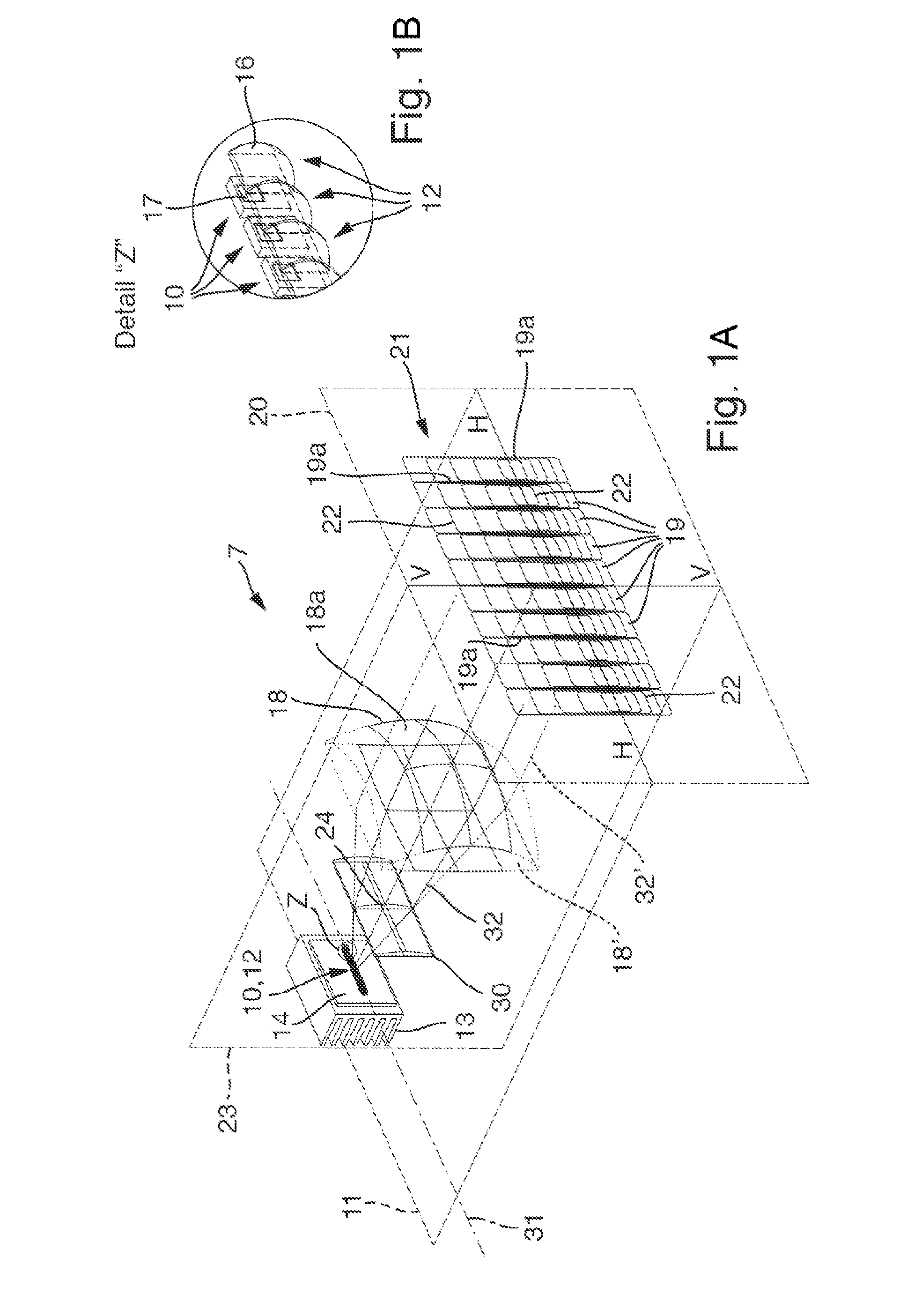Motor vehicle headlamp
a headlamp and motor vehicle technology, applied in the field of headlamps, can solve the problems of small variance, additional loss of luminous flux in the beam path, and the structural length of the light module, and achieve the effect of significantly reducing the structural length of the lens
- Summary
- Abstract
- Description
- Claims
- Application Information
AI Technical Summary
Benefits of technology
Problems solved by technology
Method used
Image
Examples
Embodiment Construction
[0036]With reference now to the drawings, FIG. 8 shows an example for an inventive motor vehicle headlamp, indicated in its entirety by the numeral 1. The headlamp 1 includes a housing 2, which in one embodiment is made of a plastic material. A light exit aperture 4 provided in the housing 2 in the direction of the light emission 3 is closed by a transparent cover plate 5. The cover plate 5 is made, for example, of glass or plastic. The cover plate 5 can be designed such that it has no optically effective profile (e.g. prisms or cylindrical lenses) (so-called clear plates), or can be provided, at least in sections, with optically effective profiles, which can cause a diffusion of the light passing through it, in particular in the horizontal direction (so-called diffusion lenses). A lamp module can be disposed in the interior of the headlamp 1, which serves for the implementation of a lamp function (e.g. blinker lights, daytime running lights, positioning or parking lights, etc.).
[00...
PUM
 Login to View More
Login to View More Abstract
Description
Claims
Application Information
 Login to View More
Login to View More - R&D
- Intellectual Property
- Life Sciences
- Materials
- Tech Scout
- Unparalleled Data Quality
- Higher Quality Content
- 60% Fewer Hallucinations
Browse by: Latest US Patents, China's latest patents, Technical Efficacy Thesaurus, Application Domain, Technology Topic, Popular Technical Reports.
© 2025 PatSnap. All rights reserved.Legal|Privacy policy|Modern Slavery Act Transparency Statement|Sitemap|About US| Contact US: help@patsnap.com



